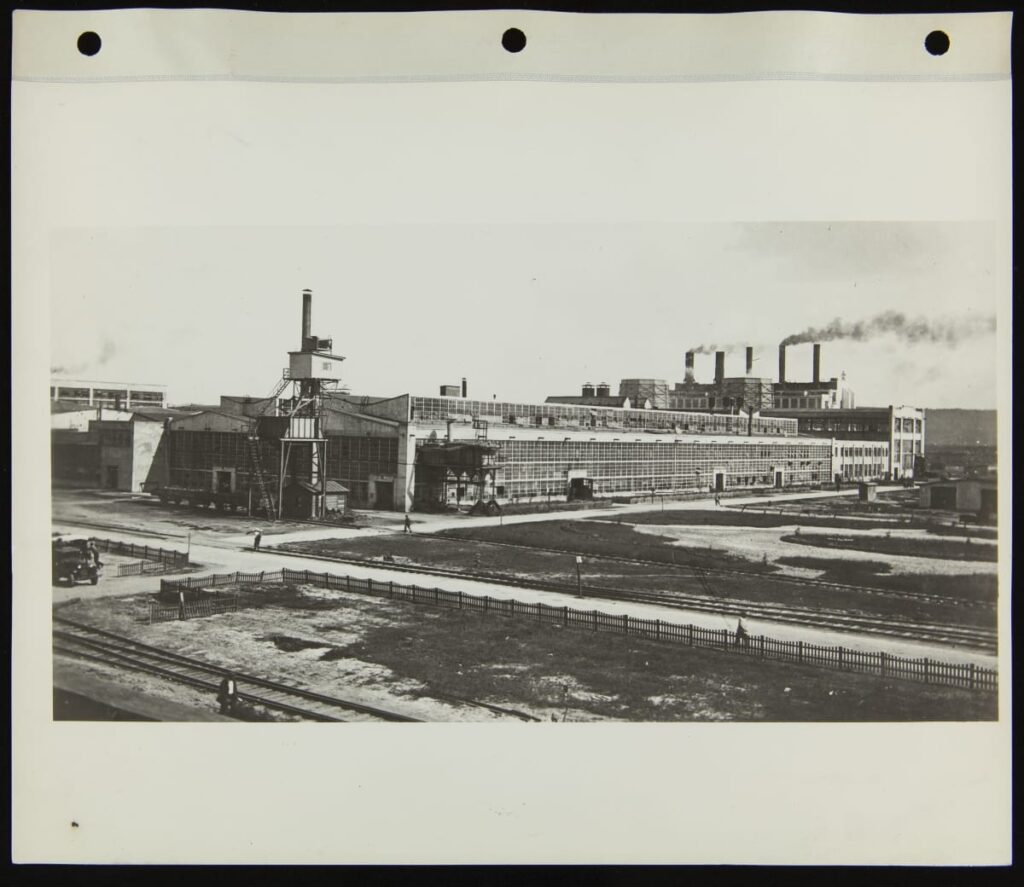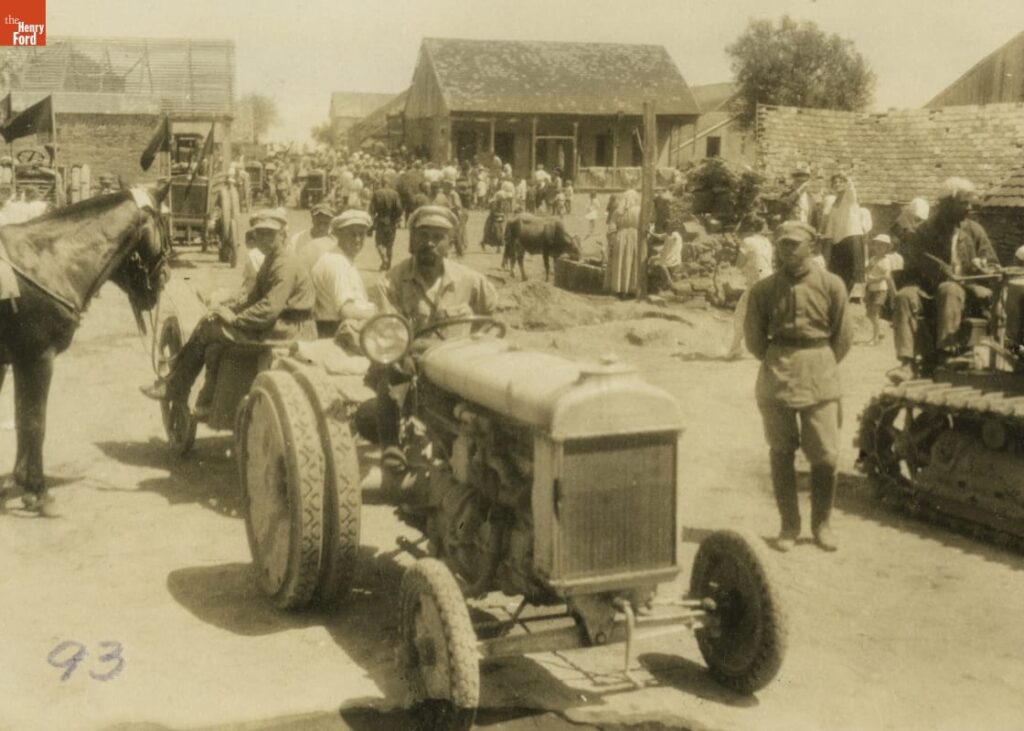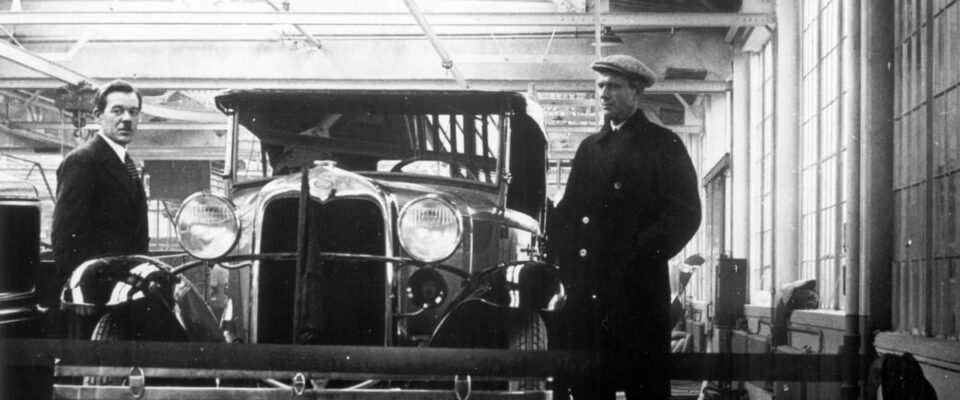Overview
By the start of the new decade, much of Russia had been destroyed and devastated by the Russian Revolution. Therefore, when the party that had supposedly fought for the workers and peasants, the Bolsheviks, came to power, the Russian people were hopeful. Unfortunately, at the very beginning of the 1920s, the government, and the overall country, still showed no signs of improvement.
The main goal of the Bolsheviks was to create a picture-perfect communist society but in reality, the Russian people did not have the same objectives. One of the most notable grey areas was in the agricultural industry. The peasants who had received land from the former upper class believed that they would be working on their own and for themselves.1"One Step Backward...:1921: Lenin's New Economic Policy," Russian Life 54, No. 2 (March/April 2011): 19-22. However, the Bolshevik government had very different plans.
Economic Chaos and Civil Unrest
Just like the true definition of a communist society, the Bolsheviks wanted to create a powerful communist country that had no class systems, no personal property, and no state violence.2"One Step Backward...:1921: Lenin's New Economic Policy," Russian Life 54, No. 2 (March/April 2011): 19-22. However, when the Bolsheviks began telling the working class farmers that they had no right to sell their crop or keep any significant amount of their harvest for themselves, people became angry.3"One Step Backward...:1921: Lenin's New Economic Policy," Russian Life 54, No. 2 (March/April 2011): 19-22, retrieved from http://search.ebscohost.com.library2.ramapo.edu:2048/login.aspx?direct=true&db=aph&AN=58717911&site=ehost-live. Farmers tried to evade the laws they saw as unfair. As a result, the Bolsheviks sent “prodotryads”, or food brigades, into villages to forcefully confiscate the crops.4"One Step Backward...:1921: Lenin's New Economic Policy," Russian Life 54, No. 2 (March/April 2011): 19-22. The confiscated food was supposed to go to the Russian cities and armies but it never made it and a long and catastrophic famine struck Russia.
Before the famine, the Bolsheviks had planned to bring the food to the cities in exchange for industrial goods, such as clothing, shoes, and farm equipment, for the farmers.5"One Step Backward...:1921: Lenin's New Economic Policy," Russian Life 54, No. 2 (March/April 2011): 19-22. Yet, it had been a while since the factories had produced any significant amount of product. Many of the workers stopped going to work when they stopped getting paid.6"One Step Backward...:1921: Lenin's New Economic Policy," Russian Life 54, No. 2 (March/April 2011): 19-22. Consequently, once the food sources and the material goods disappeared, the country’s money quickly followed. Without money, food was “purchased” with ration cards. Payments for commodities such as public transportation stopped because public transportation had to be abolished.7"One Step Backward...:1921: Lenin's New Economic Policy," Russian Life 54, No. 2 (March/April 2011): 19-22. While certain aspects of this new reality resembled a perfect communist society, the quality of life was far from ideal and the Bolshevik government recognized that something drastic needed to be done.
A New Beginning and a New Economy
In the early months of 1921, under the guidance of Vladimir Lenin, the Premier of the Soviet Union at the time, the New Economic Policy was instituted.8Library of Congress, “Revelations from the Russian Archives,” LOC, accessed April 2021. The New Economic Policy, or NEP, drastically changed the Russian economy and the way of life for the Russian people.

The NEP combined the controlled communist economy of Russia with capitalist elements that gave it the energy and direction needed to revitalize the entire country.9Library of Congress, “Revelations from the Russian Archives,” LOC, accessed April 2021. Under the NEP, some private commerce was allowed. The farmers, who had previously been required to give the government the majority of their harvest, only had to hand over a small amount. They could sell, keep, or do whatever they wanted to do with the rest.10"One Step Backward...:1921: Lenin's New Economic Policy," Russian Life 54, No. 2 (March/April 2011): 19-22. Individual farmers could rent new land and hire farm laborers who were paid at the discretion of the farmer.11"One Step Backward...:1921: Lenin's New Economic Policy," Russian Life 54, No. 2 (March/April 2011): 19-22. Individually-owned businesses, shops, and restaurants began to populate towns and cities, returning life in Russia to the way it once was.12"One Step Backward...:1921: Lenin's New Economic Policy," Russian Life 54, No. 2 (March/April 2011): 19-22. As private businesses became more common throughout the country, a surprising connection was growing between the Soviet Union and the United States of America.
American Involvement
Throughout world history, there has seemingly always been a great amount of tension between the Soviet Union, or Russia, and the United States. This is because any relations between the two powerful countries has been driven by idealogical, political, and economic factors.13Library of Congress, “Revelations from the Russian Archives,” LOC, accessed April 2021. As a consequence, there has always been feelings of distrust and bitter rivalry between the Soviet Union and the United States.14Library of Congress, “Revelations from the Russian Archives,” LOC, accessed April 2021. Yet, despite the vast differences between the two powers, the 1920s was a period of willing economic cooperation. Since Lenin’s NEP encouraged elements of capitalism, it opened the door for Western businessmen and diplomats.15Library of Congress, “Revelations from the Russian Archives,” LOC, accessed April 2021. For a variety of reasons, including compassion, sympathy, and the pursuit of profits, many Americans took an interest in the developing economy.16Library of Congress, “Revelations from the Russian Archives,” LOC, accessed April 2021. Among the businessmen from the United States, the most notable were Averell Harriman, Armand Hammer, and Henry Ford.17Library of Congress, “Revelations from the Russian Archives,” LOC, accessed April 2021.

Like many other businessmen, Henry Ford took advantage of the Soviet Union’s floundering economy. For several years, there were exploratory visits and friendly negotiations. Finally, Ford Motor Company finally signed an extremely significant agreement with the Soviet Union on May 31, 1929.18"Ford Motor Company Signs Agreement with Soviet Union," History, last modified May 28, 2020. While the economy had grown since the start of the decade, the Soviet Union had very few cars and barely any factories to support the manufacturing of motor vehicles.19"Ford Motor Company Signs Agreement with Soviet Union," History, last modified May 28, 2020. The Soviet Union signing a contract with an American businessman was a huge deal, for both the U.S.S.R. and the world.
The contract that Ford and the Soviet Union agreed upon stated that Ford would oversee the construction of a production plant that would manufacture Model A cars.20"Ford Motor Company Signs Agreement with Soviet Union," History, last modified May 28, 2020. It also formalized that an assembly plant would start operating in the city of Moscow, bringing motor vehicles and new Ford tractors directly to the Russian people.21"Ford Motor Company Signs Agreement with Soviet Union," History, last modified May 28, 2020. Part of the contract also stated that the Soviet Union would buy unassembled Ford cars and trucks and in return, the Ford Motor Company would send engineers and executives to the Soviet Union to oversee and assist with the project.22"Ford Motor Company Signs Agreement with Soviet Union," History, last modified May 28, 2020.
The contract between the Soviet Union and the Ford Motor Company was groundbreaking. All throughout the 1920s, the American government never formally recognized the Soviet Union in diplomatic negotiations.23"Ford Motor Company Signs Agreement with Soviet Union," History, last modified May 28, 2020. Therefore, the actions of businessmen and diplomats, such as Henry Ford, changed the way the world viewed the Soviet Union. Moreover, the contract was about more than just the profits and diplomatic relations. Ford had always been independent and a strong advocate for the free-market and capitalism. He believed that introducing strong elements of capitalism to the Soviet Union would help undermine its communism.24Ford Motor Company Signs Agreement with Soviet Union," History, last modified May 28, 2020. Not only were Western businessmen encouraged by money and expansion, but also by saving the economy that allowed them to flourish.
Significance
The relationship that developed between the United States and the Soviet Union as a result of early economic cooperation was extremely important for several reasons. In the context of the 1920s, the economic connection between the two countries allowed for American businessmen to not only expand their business, but also expand American diplomacy. Throughout the 1920s and into the early 1930s, the unofficial commercial ties between the two countries created a foundation for future cooperation, dialogue, and diplomatic relations.25Library of Congress. “Revelations from the Russian Archives.” LOC. Accessed April 2021. Retrieved from https://www.loc.gov/exhibits/archives/sovi.html#eare. Shortly after the end of the “Roaring Twenties”, the delicate bond between the countries would be put to the test. In 1941, with the Nazi invasion of the Soviet Union. The United States, along with several other Western countries, would form an alliance with the Soviet Union. It is evident that American businessmen in the 1920s helped create the basis of this successful alliance.
Why did I Choose to Write About the Economic Relations Between the U.S. and the U.S.S.R?
There is no denying that the 1920s were a turbulent, yet exciting, decade. However, in my experience, high school history classes only taught about what happened in America during this time. For example, almost every American high school student has learned about the 19th Amendment, the Harlem Renaissance, and Prohibition. While all of these topics are important and are significant to American history, the whole world is not just the United States. For this reason, I wanted to investigate a topic that addressed something outside of the United States. One way to do this was to research a specific aspect of U.S. foreign policy. Prior to picking this topic, I knew that the United States and Russia had a complicated history and thus, examining their relationship throughout the 1920s seemed like the perfect solution.
Bibliography
- Feature Image: “Assembly Line at Ford Motor Company Moscow Plant, 1930.” The Henry Ford. November 6, 1930.
- “Ford Motor Company Signs Agreement with Soviet Union.” History. Last modified May 28, 2020.
- Library of Congress. “Revelations from the Russian Archives.” LOC. Accessed April 2021.
- “One Step Backward…: 1921: Lenin’s New Economic Policy.” Russian Life 54, No. 2 (March/April 2011): 19-22.
- Smirnov, Sergey. “Economic Fluctuations in Russia (From the Late 1920s to 2015.” Russian Journal of Economics 1, No. 2 (June 2015): 130-153.

Rachel is a junior at Ramapo College of New Jersey taking Discovering Digital History in the Spring of 2021. She is studying History and Education and is looking forward to becoming a teacher after graduating.

